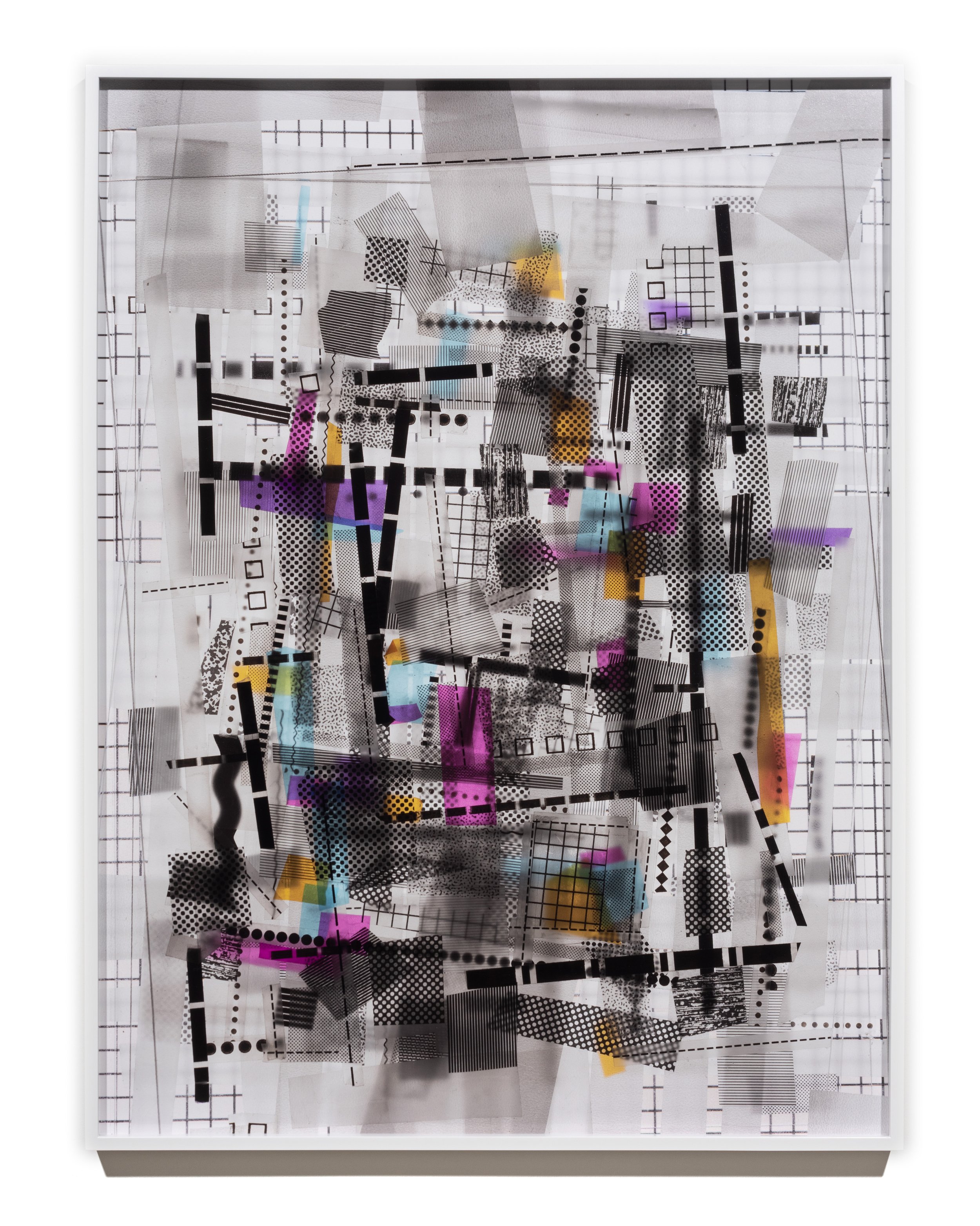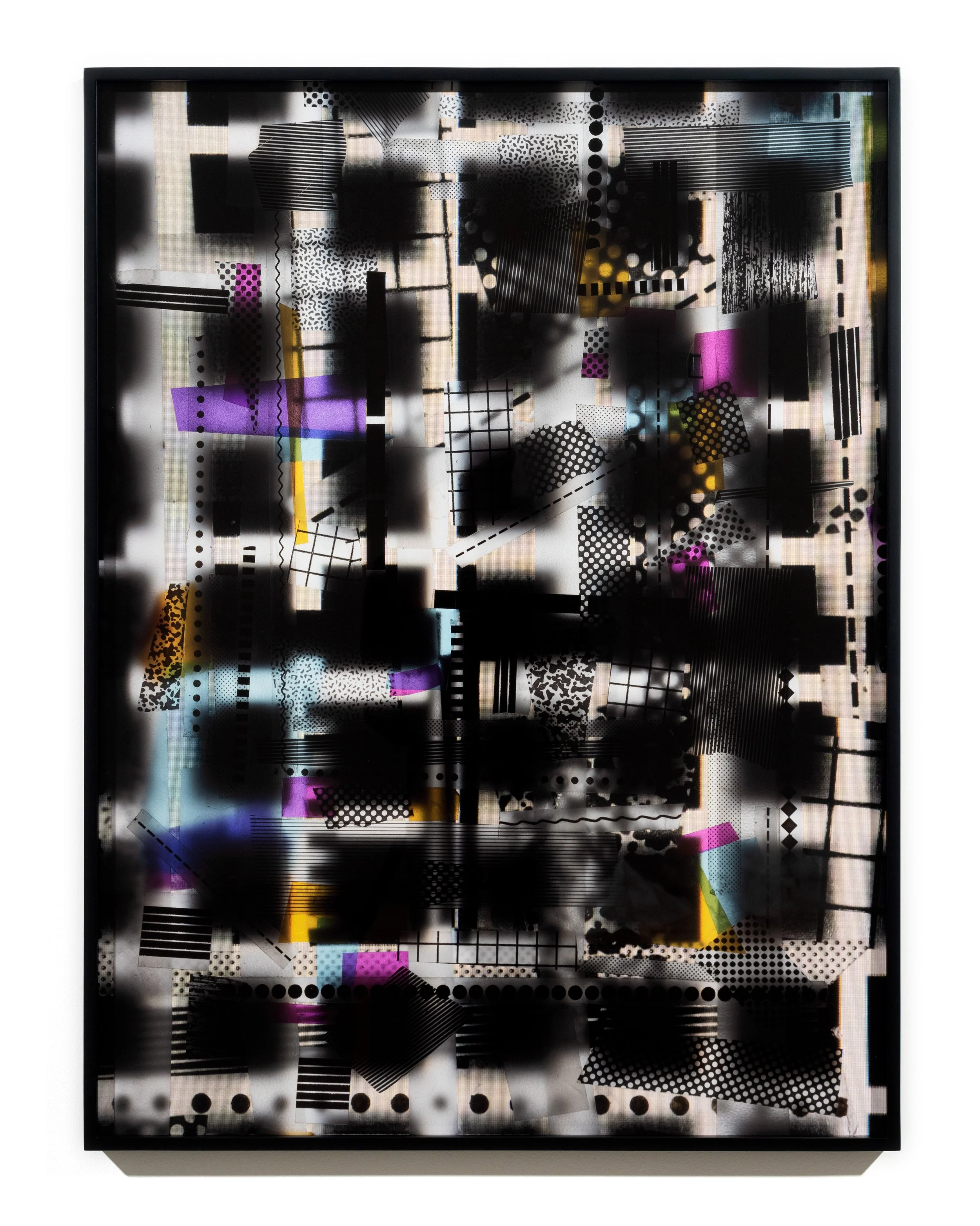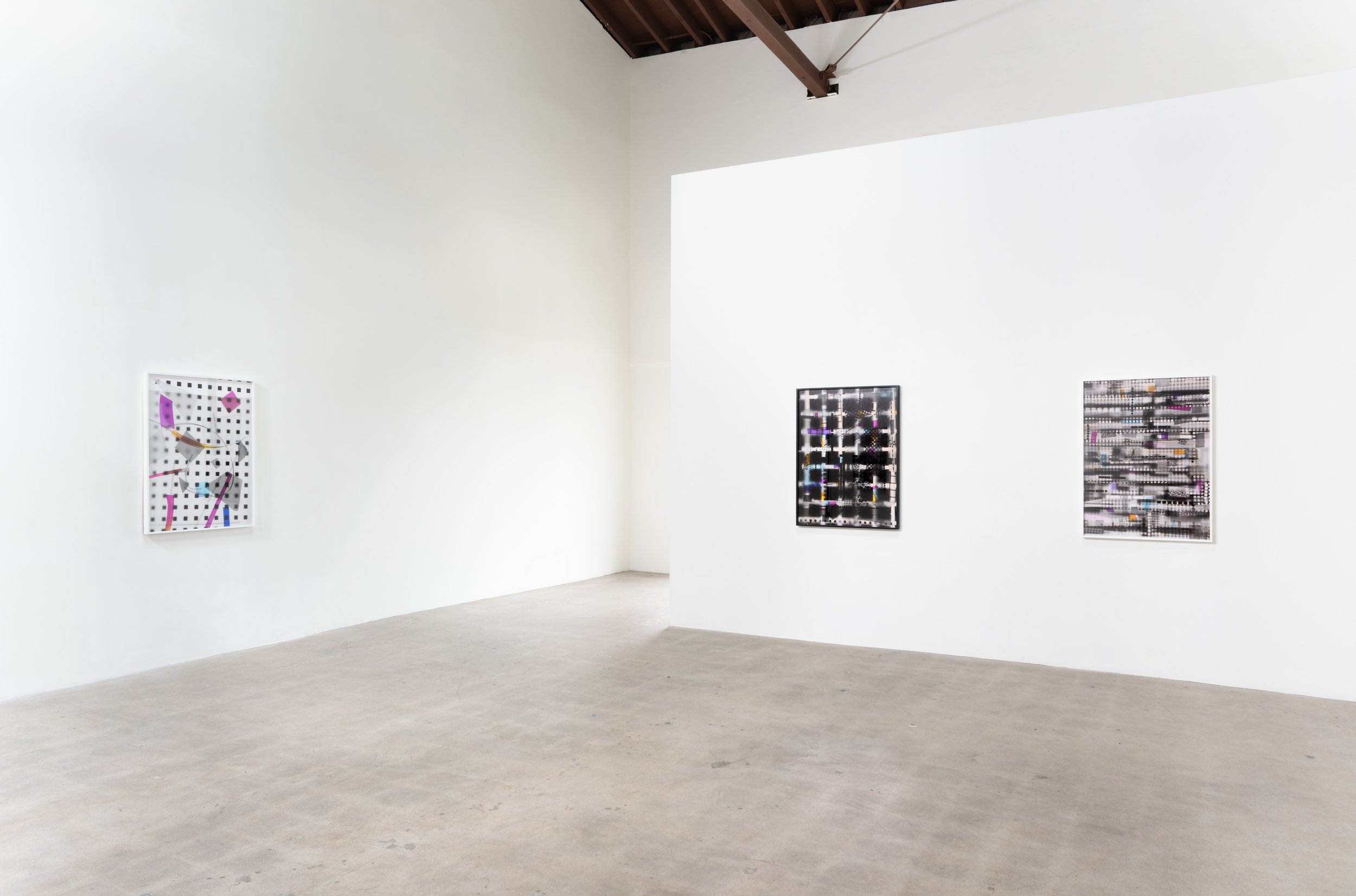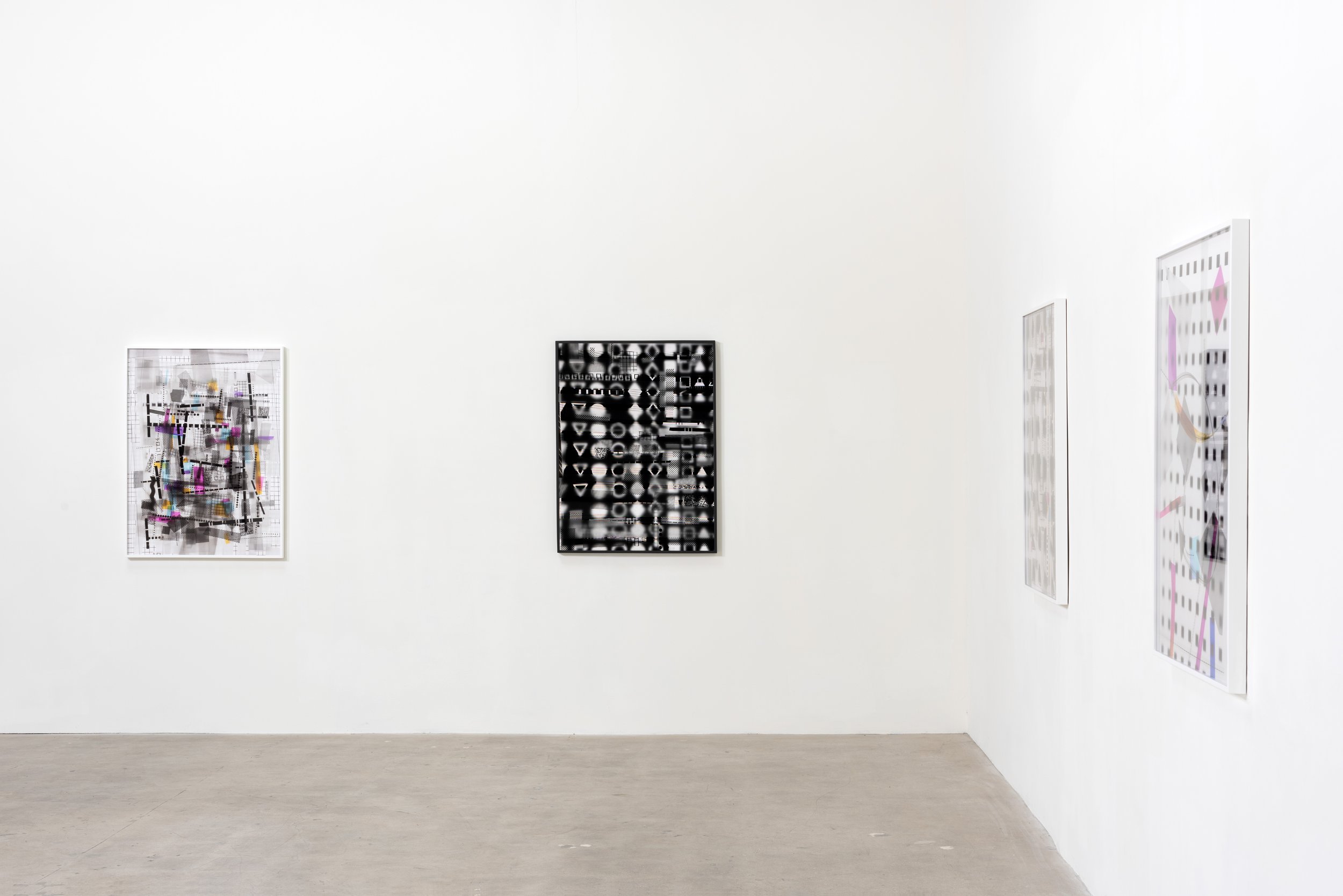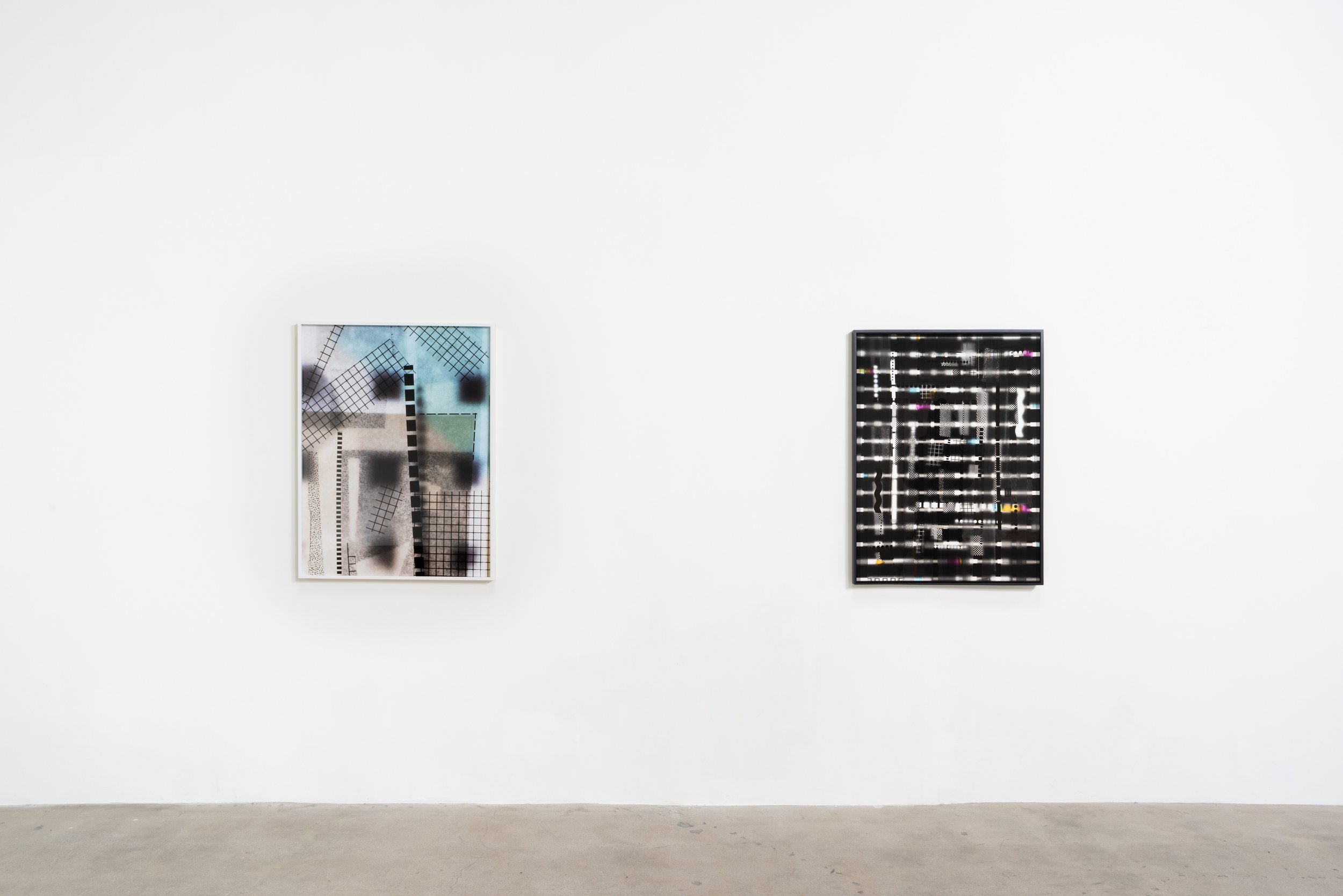Reprograph
Valerie Green’s Reprographs excavate the material and formal histories of image reproduction, photography and graphic design toward a lyrically abstract pictorial end. Utilizing an archive of materials, including an array of Letraset products given to her by her father, Green layers cut and found shapes, lines, and colors over the glow of her computer screen. The resulting images seem to define a new analog-digital interface, where the reactivation and repurposing of an outmoded–yet once revolutionary–technology speaks to the photographic process, material memory, visual continuity across time, and the breakneck pace of technological advancement. Green’s Reprographs, contemporary relatives of the photogram, reference the illusionistic, spectral quality of that technique, beloved by early modernists for its liminal position between photography, drawing, and printmaking. At the same time, they become testaments to the grounding and enduring powers of play and formal improvisation in the face of rapidly changing cultural, personal, and artistic circumstances.
Retaining iterative compositional strategies from previous bodies of work, the Reprograph pieces build upon one another in small acts of discovery. Green’s strategy relies on a real-time openness to material exploration, and to the varied effects of different opacities and textures against the screen. Colors vibrate one against another in passages of abutting transparencies, while disconnected grids and unruly, layered systems soften and sharpen to reveal soft edges defined by the bleed of the screen’s pixels. A modernist fascination with the grid takes a decidedly post-digital turn, reversing on itself and becoming an opaque wall through which seemingly discrete windows of screen disclose the composition as thoroughly analog. Throughout, the artist playfully dangles clues as to the inner workings of given images, without ever pulling the curtain back completely; traces of the artist’s hand dot about, delicately revealing procedural realities that inform close looking at the entire series.
Aesthetically rooted in 1980s Los Angeles, where the artist grew up in her parents’ design studio, Green recalls the hard-edged, graphic store windows, billboards, and magazines of the era. Sweeping patterned passages and broad shocks of solid color came to define the lasting graphic sensibility of the city amid demographic and social change. Green’s work speaks to the generational changes reflected in these aesthetic turnovers, as well as their bearing on personal memory and experience. Green’s Reprographs approach the occasionally uneasy emotional terrain that defines most lives regardless of generation or age: the adjustment of expectations for the future tempered by increasing removal from, and longing for, the past. Green’s latest body of work firmly plants its roots in the now, as the quintessential machine of contemporary life renews the tools of decades past in service of compositions that might act as roadmaps and strategies for the future.



